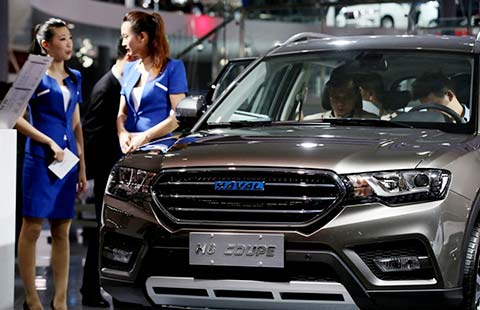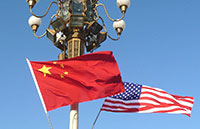Foreign investors face challenges
By TYLER ROOKER (China Daily) Updated: 2015-07-27 09:31Terms of engagement rely on a combination of oversight and in-depth knowledge of the country
Last year, China overtook the United States as the world's top destination for foreign direct investment for the first time in more than a decade.
But despite the ever-increasing flow of overseas money into the country, China remains a challenging environment for foreign investors and institutions, many of which struggle to fully understand the twists and turns of the investment landscape they are attempting to traverse.
A complex web of rules and regulations governs foreign investment in China and current laws are in flux: The Chinese Ministry of Commerce issued a draft Foreign Investment Law for public consultation back in January. The draft law, if passed, should go a long way to relaxing regulations on foreign investment and making the rules of engagement easier to understand.
Meanwhile a series of corporate governance scandals involving Chinese firms in recent years has unsettled foreign investors, particularly those who have bought shares in Chinese companies listed on overseas stock exchanges.
In a world where increased shareholder and stakeholder activism, regulatory oversight, consumer concerns and media attention are casting a brighter spotlight on the ways corporations are financed and managed, foreign investors in China must do their homework.
The starting point is an understanding of two parallel Chinese institutions that have a significant impact on corporate governance: the State-Owned Assets Supervision and Administration Commission, or SASAC, and Variable Interest Entities, or VIEs.
At first glance, these institutions relate to distinct areas of business. The SASAC, often referred to as the "largest controlling shareholder in the world", oversees assets in State-owned enterprises on behalf of the State. VIEs, on the other hand, allow companies in China operating in industries restricted from foreign direct investment to list on foreign stock markets. E-commerce giant Alibaba adopted this approach for its initial public offering in the US-one of the largest on record.
However, the SASAC and VIEs share a common form of corporate governance. As controlling shareholders of private and State companies in China, SASAC and VIEs are shaping the future of China's business and investment environment. Foreign investors, companies and institutions operating in China need to pay them close attention.
The SASAC was created as an institution that would separate the State from business; the "State" in a "State-owned enterprise". Its remit is to increase the value of State assets. But, like China's development in general, it is as much about political and social progress as economic growth: To maximize both shareholder returns and stakeholder interests.
The SASAC's significance should not be understated. State-owned assets in China total more than 100 trillion yuan ($16.3 trillion)-near enough equal to the entire GDP of the European Union in terms of purchasing power. The national-level SASAC controls a minority of these assets: 35 trillion yuan. Local governments hold an astonishing 56 trillion yuan in assets, the majority of which are held in city-level SASACs.
Shanghai has 12.12 trillion yuan in assets under supervision by its SASAC. Consider this in comparison, for example, with General Electric, which has $657 billion, and IBM, $126 billion.
Like investors overseeing corporate governance, the SASAC "owns", but does not run, massive national and local State business groups. It fights for influence in the business groups that manage and operate the complex and interwoven web of subsidiaries, listed and unlisted, that comprises the corporate structure of every enterprise.
Western investment in China is viewed both positively and negatively by Chinese businesses. Deng Xiaoping once summed this up as: "If you open a window, fresh air blows in along with flies." In opening up to the West, China sought long-term investment and mutual development. That has often come into conflict with the Western philosophy of investing.
The last decade has seen the rise of Western investment in the form of VIEs, the corporate organizational structures that allow a Chinese company to list in the West while retaining its headquarters and independence on the Chinese mainland. Due to restrictions on FDI in certain Chinese sectors, only companies owned by the Chinese mainland are permitted to obtain business, telecommunications, education and media licenses. Listing in the West-such as on Nasdaq or the NYSE-entails selling part of the ownership to foreign investors. Hence a VIE that contractually owns the Chinese mainland business is created and sold to Western investors to evade these restrictions.
My analysis of companies in China listed on the Nasdaq, NYSE and AMEX reveals that 85 of the 151 companies have VIEs. They include Baidu and Alibaba. Yet 68 of these 85 trade less than half of their shares. Western investors need to understand that while these are dynamic, future-oriented companies, they seek foreign investment not simply for capital but for strategy, supervision and governance.
The status of VIEs gives the government power to enforce its interests, potentially in conflict with those of investors.
Governance conflicts within companies with foreign investors are not restricted to VIEs, as evidenced by a joint venture between French multinational Danone and Hangzhou's Wahaha. In 2007, Danone sued Wahaha for establishing a parallel company selling products that competed with the joint venture. After two years of litigation, an out-of-court settlement was reached that was generally viewed as a failure for Danone. In terms of corporate governance, what happened?
Despite holding a 51-percent share in the joint venture, Danone did not engage with Wahaha in the governance of the joint venture or its operations in any meaningful way. While providing capital, technology and marketing, Danone governed as a passive foreign owner, enjoying profits without helping the joint venture succeed. This is a cautionary lesson: even without a VIE and contractual ownership risks, investment in China cannot rest on juridical or fiduciary assumptions.
In China, corporate governance relies on engagement. If the controlling shareholder or founder of a company absconds with assets, a risk borne by both the SASAC and VIE owners, the law is an uncertain remedy. The overarching goals of acquiring capabilities, building national champions, generating employment and developing local economies trump legal arguments based on absent shareholders' interests.
Even if foreign investors are allowed to establish wholly foreign-owned corporations, or WFOEs, that can obtain licenses in previously restricted Chinese sectors, is ownership enough to keep founders, managers and employees from running off with company assets?
In the West, businesses file a lawsuit to initiate negotiations that lead to a settlement, with leverage being the threat of a trial. China's businesses, however, see a lawsuit as the end of negotiation, while Western businesses often view contracts as fait accompli.
Investors in China need to ask whether enforcement of the law is in the interests of local boards, whether the SASAC or VIE owners. The public crackdown on corruption among China's business executives shows the commitment of China's new regime to running businesses in responsible terms. The Party continues to be both welcoming to entrepreneurs and committed to influencing governance in businesses of strategic, national or local development interest. China needs to know that Western investors share its concerns.
To invest in China, and work with Chinese firms, the West needs to pay close attention to how the three tenets of corporation governance-strategy, succession, and fiduciary and regulatory compliance-play out. In this, SASACs, company founders and local stakeholders are their allies. Responsible, long-term investment can only occur through engagement between Western parties and their local counterparts.
The author is assistant professor of China Business at the School of Contemporary Chinese Studies, University of Nottingham, UK. The views do not necessarily reflect those of China Daily.
- 2015 China International Fair for Investment and Trade kicks off in Xiamen
- China's commodity imports robust in Jan-Aug period
- China stocks rebound 2.92%
- 2015 China box office already past 2014 total
- China foreign trade decline widens in August
- Interview: JP Morgan's senior executive bullish on China
- Innovation, development the focus for NZ mayors
- Lives of freelancers

















